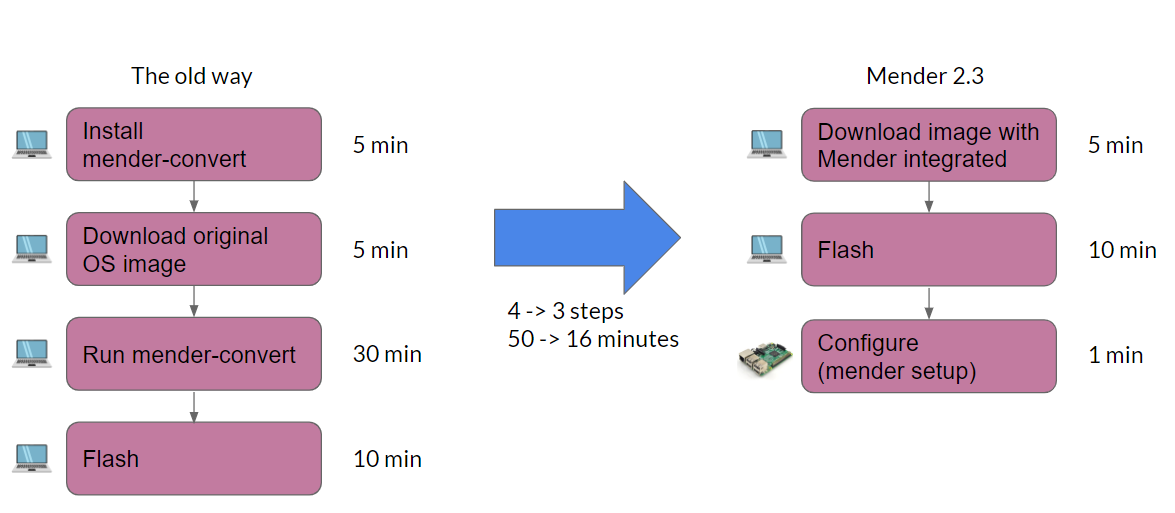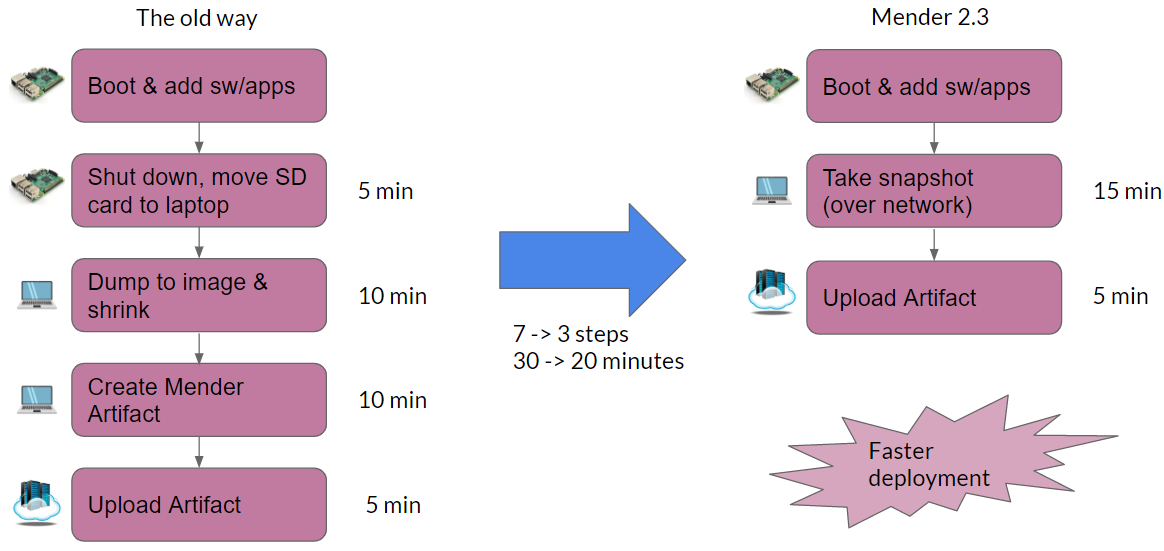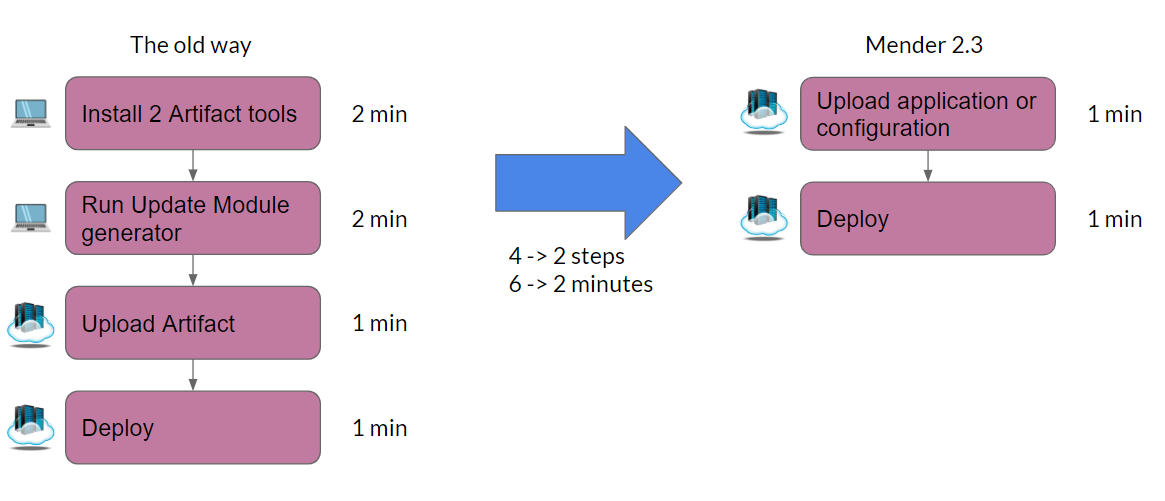Mender 2.3 made a giant leap simplifying software updates for the top three use cases: System, application and configuration updates. We’ve made it easier to update these key use cases in OS environments that are most popular such as Ubuntu, Debian and Raspbian. The overall results: 47% fewer steps and 56% less time from setup to first deployment. Here’s how:
Quick device provisioning
Disk images (*.img or *.sdimg) are based on images provided by board manufacturers and they are used to provision the device storage. The old way was such that one had to convert the base image to support Mender’s requirements by going through a series of steps to include installing, downloading, running and flashing the image on the device.
Mender is now integrated on a Raspberry Pi 3 with a Raspbian Buster Lite image. This image has been converted so that it supports robust A/B system updates with the Mender client installed as part of the image. This eliminates a few steps as depicted below and reduces the time by 68% to provision the device which is a significant improvement from the old way.

Quick deployments of system updates with Mender snapshot
The snapshot is a client-side feature in Mender 2.3 that allows the simplification of the workflow. Here’s the old workflow: Download, prepare and write the disk image to SD card, boot device, setup Mender client, create Mender Artifact, upload Artifact to server UI and finally deploy.
Instead now, snapshot allows the system update in a single step by moving the contents of the currently running system image to a file or network location and automatically creates the Mender Artifact. Then ready to upload Artifact and finally deploy.
This eliminates a few steps as depicted below and reduces the time by 33% to do a system update which is a significant improvement from the old way.

Quick deployments of applications and configurations
Mender 2.3 allows easily generating application-based updates, right from the Mender server web UI itself without the need to install, and run using Update Modules. You can simply upload the file you want to deploy and the Mender server will package it and make it available for deployment.
This eliminates a few steps as depicted below and reduces the time by 67% to do an application or configuration update which is a significant improvement from the old way.

Recent articles
Failed lifecycle management is unacceptable in FDA and MDR compliance
The struggle to reach global markets for medical device manufacturers: The importance of international compliance
The differences between the US FDA’s device approval process and the EU’s medical device regulation (MDR): An essential dual-compliance framework for global manufacturers
Learn why leading companies choose Mender
Discover how Mender empowers both you and your customers with secure and reliable over-the-air updates for IoT devices. Focus on your product, and benefit from specialized OTA expertise and best practices.




